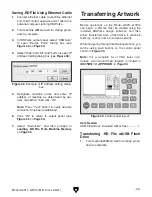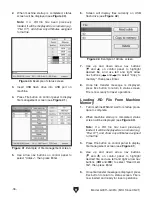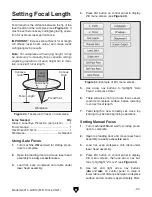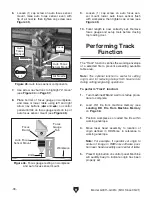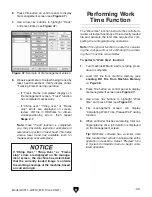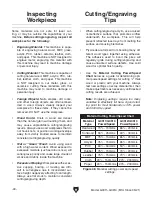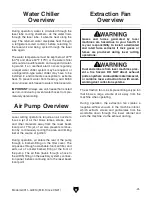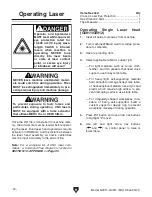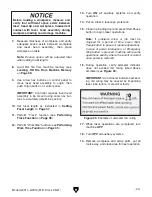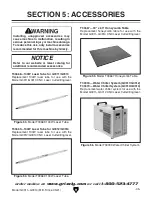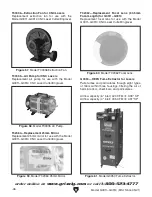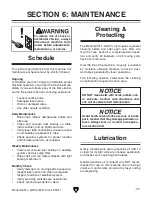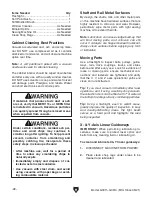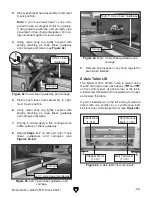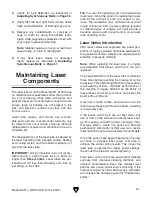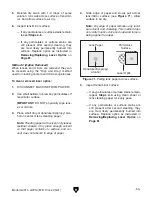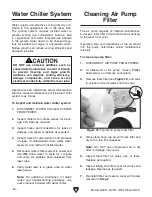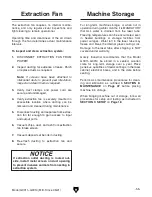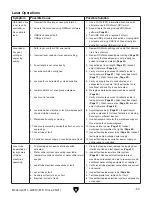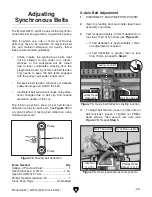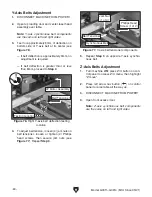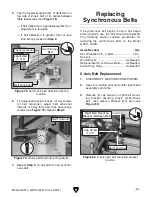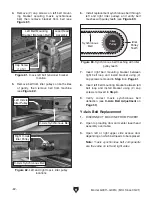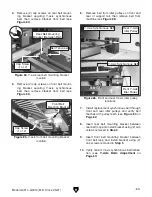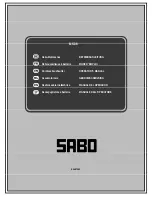
If materials that produce toxic dust or ash
are cut, verify that MERV 15+ or HEPA filter
is installed in vacuum. Hazardous particles
can quickly spread through enclosed areas
when expelled from vacuum.
Under certain conditions, residual ash par-
ticles and wood chips may continue to
smolder long after igniting. To help prevent
vacuum container from smoldering and
possibly catching fire, incorporate these
safety steps in cleanup schedule:
• After machine use, wait for a period of
time to allow any smoldering chips to
naturally expire.
• Immediately empty and dispose of col-
lected waste in steel container.
• Use vacuum with steel drum, and avoid
using vacuums with paper bags or exist-
ing combustible material.
-48-
Model G0911–G0914 (Mfd. Since 05/21)
Items Needed
Qty
Flashlight ........................................................... 1
Soft Paintbrush .................................................. 1
Stiff-Bristled Brush ............................................ 1
Window Cleaner ................................ As Needed
Mineral Spirits .................................... As Needed
Sewing Machine Oil ........................... As Needed
Clean Shop Rags .............................. As Needed
Cabinet Cleaning Best Practices
Vacuum accumulated dust, ash, and scrap mate-
rial. DO NOT use compressed air as it contains
atomized oil and water, and will obscure machine
optics over time.
Note: A soft paintbrush paired with a vacuum
nozzle works well for cabinet cleaning.
The cabinet interior should be wiped down before
and after every use with a quality window cleaner.
DO NOT use solvents or soap and water. Solvent
will damage paint, Plexiglas, and labels. Water
can short electronics and corrode parts.
Shaft and Rail Metal Surfaces
By design, the shafts, rails, and other metal parts
on this machine have hardened surfaces that are
highly resistant to corrosion and wear. However,
periodically wipe metal parts with light sewing
machine oil to extend their life.
Note: Lubrication can cause sludge build-up that
will bind moving parts, and corrosion can still
occur if catalysts are trapped beneath lubricant.
Always clean surfaces before applying any form
of lubrication.
Moving Parts
Use a flashlight to inspect belts, pulleys, guide-
ways, rails, drive couplings, tracks, and slides
before and after every use. Look for evidence of
loose or missing parts, ensure mechanical con-
nections and fasteners are tightened, and verify
that the X, Y, and Z axes operational paths are
clean and unobstructed.
Tip: If you must vacuum immediately after laser
operations, and if using a wet/dry shop vacuum,
the collection drum can be filled with 1" of water at
the bottom to extinguish any smoldering particles.
Tip: Using a flashlight, even in well-lit areas,
greatly improves the quality of inspection. In busy
and visually-distracting areas, the light beam
serves as a focal point and highlights the area
being inspected.
X- & Y-Axis Linear Guideways
IMPORTANT: When performing lubrication pro-
cedures, make sure to protect laser optics and
belts from any cleaning fluid or lubricating oil.
To clean and lubricate X & Y linear guideways:
1. DISCONNECT MACHINE FROM POWER!
2. Place clean shop rags under areas to be
cleaned and lubricated.
Summary of Contents for G0911
Page 100: ......


